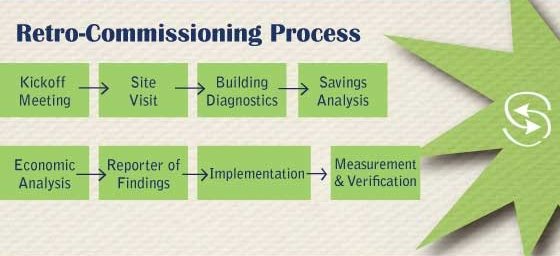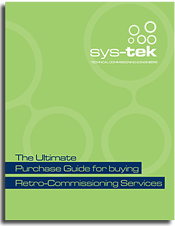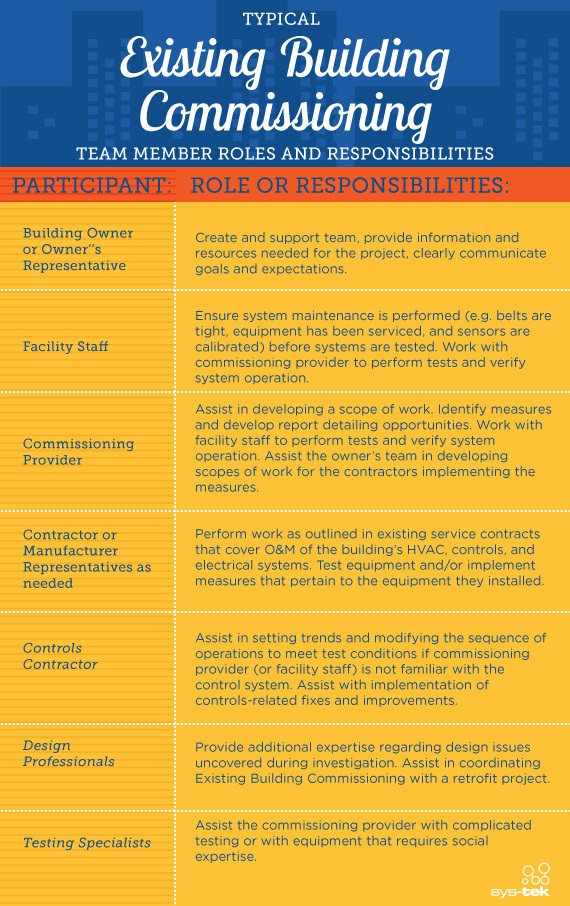The Commissioning and Retro-Commissioning Process
Oct 07, 2014
Commissioning is not a quick fix. We recently shared with you our Purchasing Guide for Retro-Commissioning infographic and free download, and in the purchasing guide the process of commissioning is explained.

As you can see, commissioning and retro-commissioning is not a simple, quick task that can be performed perfunctorily. For many building owners and contractors, commissioning is viewed in the same light as inspections, something that has to be born at the end of a project. Often very little time is allowed, and usually tacked on at the end of construction or renovation, for commissioning. Staff is assigned, whether or not they have any real training or experience with commissioning, and the “commissioning” is grudgingly performed. This approach is almost as bad as no commissioning at all.
Commissioning offers building owners a number of benefits like lowering operation and maintenance costs, increased sustainability, and a sizable return on investment, but only if performed properly as a process.
The first step in ensuring commissioning is successful is choosing a commissioning company with experience and specific areas of expertise. An experienced commissioning staff can make all of the difference in how successful a commissioning project is. A competent commissioning team can perform building diagnostics and develop a solid commissioning plan. Once the plan has been implemented it is vitally important that measurement and verification happen on an ongoing basis. Observation and measurement allow for changes to be made and the process to be as efficient as possible.
Download the Retro-Commissioning Purchase Guide to learn more about choosing a commissioning company and how the commissioning and retro-commissioning process works.

Retrocommissioning Purchase Guide
Our Purchase Guide to Retro-Commissioning will tell you everything you need to know about finding the right retro-commissioning agent for your facility.








